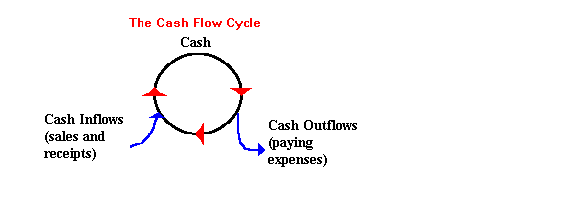

In its simplest form, cash flow is the movement of money in and out of your business. It could be described as the process in which your business uses cash to generate goods or services for the sale to your customers, collects the cash from the sales, and then completes this cycle all over again.
Inflows. Inflows are the movement of money into your cash flow. Inflows are most likely from the sale of your goods or services to your customers. If you extend credit to your customers and allow them to charge the sale of the goods or services to their account, then an inflow occurs as you collect on the customers' accounts. The proceeds from a bank loan is also a cash inflow.
Outflows. Outflows are the movement of money out of your business. Outflows are generally the result of paying expenses. If your business involves reselling goods, then your largest outflow is most likely to be for the purchase of retail inventory. A manufacturing business's largest outflows will mostly likely be for the purchases of raw materials and other components needed for the manufacturing of the final product. Purchasing fixed assets, paying back loans, and paying accounts payable
are also cash outflows.It is important to manage your cash flow because: